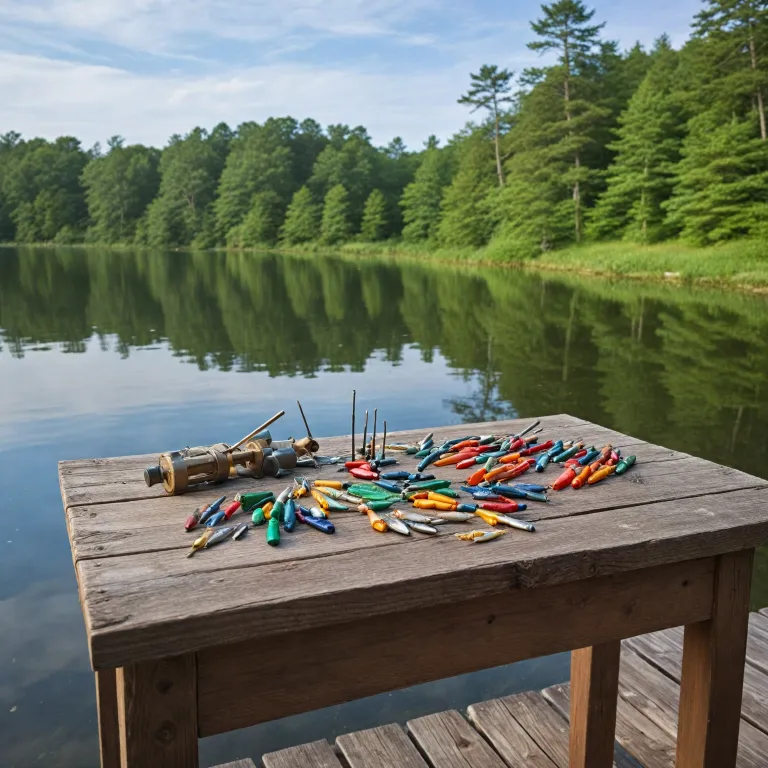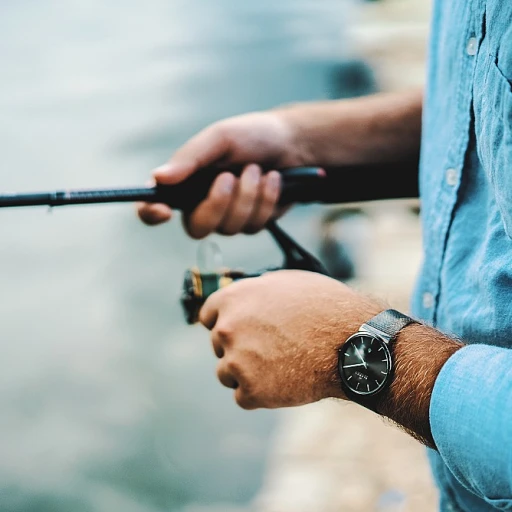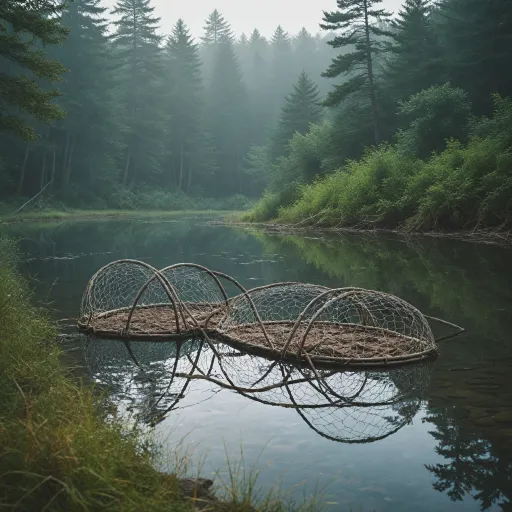
Understanding the role of fishing plugs in recreational fishing
Why Fishing Plugs Matter for Recreational Anglers
Fishing plugs are a staple in the tackle boxes of recreational fishermen. Whether you’re casting for rainbow trout in a quiet lake or trolling for bluefin tuna offshore, plugs offer a versatile and effective way to attract fish. These lures mimic the action and appearance of real bait, making them irresistible to a wide range of species, from lake trout to striped bass.
One of the main reasons plugs are so popular is their ability to cover different fishing situations. You can use them for casting, trolling, or even when targeting specific fish like trout or bass. The action of a well-designed plug can trigger aggressive strikes, especially when fish are holding near structure or suspended in open water.
What Sets Plugs Apart from Other Lures
Unlike soft baits or spinners, fishing plugs are typically made from durable materials and come in a variety of shapes and sizes. Some, like the pencil popper, are designed for surface action, while others dive deep to reach fish holding at different depths. Brands like Lyman Lures are known for their selection full of options tailored to specific fishing scenarios, including lake trout and striped bass.
- Action: Plugs create lifelike movements that can imitate injured baitfish.
- Versatility: Suitable for both freshwater and saltwater fishing.
- Durability: Built to withstand repeated strikes and tough conditions.
When choosing selection of fishing plugs, anglers often consider the regular price, sale price, and unit price. Many retailers offer free shipping on shipping orders over a certain amount, making it easier to try different lures without breaking the bank. Keep an eye out for sale and super deals to refresh your tackle box with new options.
For those interested in maximizing their catch, understanding the role of plugs is just the start. Techniques, materials, and matching the right plug to the right fish are all key factors. If you want to dive deeper into bait strategies, check out this resource on mastering the art of using cut bait in recreational fishing for more tips on effective fishing approaches.
Types of fishing plugs and their unique features
Exploring the Main Families of Fishing Plugs
Fishing plugs are a staple in every angler’s tackle box, and knowing the different types can make a real difference in your catch rate. Each plug is designed for a specific action and target fish, whether you’re casting for lake trout, trolling for bluefin tuna, or working shallow waters for rainbow trout. Here’s a breakdown of the most common plug types and what makes them effective.
- Crankbaits: These lures are known for their wobbling action and are great for covering water quickly. They come in a range of sizes and diving depths, making them versatile for both shallow and deep lakes. Crankbaits are especially effective when fished around structure where fish are holding.
- Jerkbaits: Designed for a stop-and-go retrieve, jerkbaits mimic injured baitfish. Their erratic action can trigger strikes from predatory fish like striped bass and lake trout. They’re a solid choice when the bite is tough and fish are less active.
- Pencil Poppers: These topwater plugs create a commotion on the surface, drawing aggressive strikes from species like bluefin tuna and striped bass. Pencil poppers are best used in calm conditions when fish are feeding near the surface.
- Stickbaits: With a slim profile and subtle action, stickbaits are ideal for clear water and finicky fish. They’re often fished with a steady retrieve or slight twitches to imitate small baitfish.
- Surface Plugs: These lures float and create surface disturbance, making them a go-to for early morning or late evening fishing. Surface plugs can be especially effective for rainbow trout and bass in lakes.
- Trolling Plugs: Built for durability and long-distance action, trolling plugs are used behind a moving boat. They’re popular for targeting larger fish like lake trout and bluefin tuna, and their robust construction stands up to repeated strikes.
Some brands, like Lyman Lures, have built a reputation for producing super effective plugs for specific species. When choosing a plug, consider the regular price versus sale price, as well as unit price if you’re buying in bulk. Many retailers offer free shipping on orders over a certain amount, so it’s worth checking for a sale or a full refresh of their selection.
For anglers interested in expanding their lure arsenal, exploring the world of dough baits can offer new options for targeting trout and other species. But when it comes to plugs, matching the action and size to your target fish and local conditions is key to success.
How to match fishing plugs to local fish species
Adapting Your Plug Selection to Local Fish
Matching your fishing plugs to the fish species in your area is essential for better catches. Not all lures work equally well for every fish, and understanding the preferences of local species can make a big difference. For example, lake trout and rainbow trout often respond to different plug actions and colors compared to striped bass or bluefin tuna. The right plug can mean the difference between a slow day and a full refresh of your tackle box with new stories to tell.
- Lake trout: These fish are often fished in deeper, colder waters. Trolling with larger, weighted plugs or classic lyman lures can be effective. Look for plugs with a steady, wobbling action that mimics injured baitfish.
- Rainbow trout: Smaller plugs with subtle action work well, especially when casting near inlets or structure. Bright colors can attract attention in clear water.
- Striped bass: Pencil popper plugs are popular for their surface action, especially during early morning or late evening. Striped bass often strike at plugs that create a commotion on the surface.
- Bluefin tuna: For these powerful fish, super durable plugs with reinforced hardware are a must. Trolling large, brightly colored plugs offshore increases your chances.
When choosing your selection of fishing plugs, consider the regular price, sale price, and unit price. Sometimes, a sale or free shipping offer on shipping orders can help you stock up on a selection full of effective lures without breaking the bank. Always check the durability and materials, as discussed earlier, to ensure your plug can handle the fight, especially with larger species.
Local knowledge is key. Talk to other anglers about what’s working in your lake or region. Some plugs are more effective in certain conditions or times of year. For more tips on adapting your gear to your fishing destination, check out this guide on choosing the right travel rod.
Remember, the best plug is the one that matches the fish you’re targeting, the conditions you’re fishing, and your own casting or trolling style. Don’t hesitate to experiment with different lures and actions until you find what works best for your local fish.
Materials and durability: what to look for in a fishing plug
What Makes a Plug Last: Materials and Build Quality
When choosing fishing plugs, the material and construction play a huge role in how effective and long-lasting your lure will be. Whether you’re after lake trout, striped bass, or bluefin tuna, understanding what your plug is made of can mean the difference between a full refresh of your tackle box every season or holding onto your favorite lures for years.
- Wooden plugs – Classic and often used for their natural action in the water. Brands like Lyman Lures are known for their wooden bodies, which can be super effective for trolling or casting for lake trout. However, wood can absorb water over time, so check for cracks or swelling after heavy use.
- Plastic plugs – These are the most common today. They’re durable, lightweight, and come in a huge selection full of colors and shapes. Plastic plugs are less likely to warp and are easy to clean, making them a regular choice for anglers who fish in both saltwater and freshwater.
- Hybrid materials – Some plugs combine plastic with metal or rubber for added action or durability. Pencil poppers, for example, often use a mix to create a unique surface action that attracts striped bass and other aggressive fish.
Durability Factors: What to Look For
Durability isn’t just about the plug’s body. Pay attention to the hardware too. Hooks, split rings, and eyes should be corrosion-resistant, especially if you’re fishing saltwater or targeting big species like bluefin tuna. A plug’s finish also matters – a high-quality paint job resists chipping and fading, keeping your lure looking lifelike after many casts.
When comparing plugs, consider the unit price or price per plug. Sometimes a higher regular price means better build quality, but keep an eye out for sale prices or free shipping on bulk orders. A super deal on a selection full of durable lures can save you money in the long run, especially if you’re regularly fished in tough conditions.
Matching Material to Technique and Target Fish
If you’re trolling deep for lake trout, a heavier, solid plug might be best. For casting to rainbow trout in a clear lake, a lighter, more subtle action could be more effective. For striped bass, a robust pencil popper that can handle aggressive strikes is key. Always match your plug’s material and build to your fishing style and the fish you’re targeting for the most effective results.
Techniques for using fishing plugs effectively
Mastering Retrieval and Casting Techniques
Getting the most out of your fishing plugs starts with the right casting and retrieval methods. Whether you’re targeting lake trout, rainbow trout, or striped bass, the way you work your lure can make a big difference. For example, a steady retrieve is often effective for trout in clear lakes, while a stop-and-go action can trigger strikes from more cautious fish. Pencil popper plugs are best used with a sharp, rhythmic twitching motion to mimic injured baitfish, attracting aggressive species like bluefin tuna or striped bass.
Adapting to Water Conditions and Fish Behavior
Water clarity, temperature, and fish activity all influence how you should use your plugs. In murky water, choose lures with vibrant colors or rattles to help fish locate your bait. When fish are holding deep, try trolling your plugs at different depths until you find the most effective zone. Lyman lures, known for their unique action, are especially popular for lake trout when fished slowly along drop-offs or structure.
Fine-Tuning Your Approach for Better Results
- Match your plug size and action to the local baitfish and target species. Smaller plugs often work best for rainbow trout, while larger, more aggressive lures are ideal for bluefin tuna.
- Experiment with retrieve speed—sometimes a super slow presentation is more effective, especially in cold water or when fish are less active.
- Switch up your casting angles to cover more water and increase your chances of finding active fish.
Maximizing Value: Regular Price vs. Sale Price
When choosing fishing plugs, consider not just the action and effectiveness, but also the regular price, sale price, and unit price. Some brands offer free shipping on larger orders, which can make a full refresh of your tackle box more affordable. Keep an eye out for sales to get the best selection full of proven lures without breaking the bank. Comparing price unit and price sale across different retailers helps ensure you’re getting the most value for your investment.
Maintaining Your Plugs for Long-Term Performance
After each trip, rinse your plugs with fresh water to remove debris and prevent corrosion, especially if you’ve been trolling in saltwater. Store them in a dry tackle box and check hooks and split rings regularly for wear. This simple routine keeps your lures in top shape, so you’re always ready for the next fishing adventure.
Troubleshooting common issues with fishing plugs
Solving Plug Performance Problems
Even with the best fishing plugs, anglers sometimes face issues that can reduce their effectiveness. Understanding how to troubleshoot these problems can help you get the most out of your lures and improve your catch rates, whether you’re targeting lake trout, striped bass, or bluefin tuna.
- Plug Not Running True: If your plug veers to one side or spins, check the eyelet alignment and make sure the hooks aren’t tangled. A bent eyelet can be gently adjusted with pliers. Also, inspect the plug for any damage from previous fished trips that could affect its action.
- Lack of Action: Some plugs, like pencil poppers or lyman lures, rely on specific retrieval speeds or rod movements. Experiment with your casting and trolling techniques to find the most effective action. Sometimes, a full refresh of your retrieve style is all it takes to entice fish.
- Paint or Finish Peeling: Durability is key, especially when fishing in rocky lakes or saltwater. If you notice your plug’s finish wearing off, consider the material and coating quality next time you’re choosing selection. Higher unit price or regular price plugs often use tougher finishes, but keep an eye out for sale price or price sale deals on premium lures.
- Hooks Not Holding Fish: If you’re losing fish, check the sharpness and size of your hooks. Swapping out factory hooks for higher quality ones can make your plugs more effective, especially when targeting strong fighters like rainbow trout or striped bass.
- Plug Sinking or Floating Incorrectly: Waterlogged plugs or damaged internal chambers can affect buoyancy. Dry your lures after each trip and store them properly. If a plug continues to misbehave, it might be time for a replacement from your selection full of trusted brands.
Maximizing Value and Convenience
When troubleshooting, consider the overall value of your plugs. Compare regular price, sale price, and unit price to ensure you’re getting the best deal. Many retailers offer free shipping or shipping orders discounts, especially on bulk purchases. This can make it easier to keep your tackle box stocked with a variety of lures for different conditions and species.
Remember, the most effective fishing plugs are those that match your local fish, are made from durable materials, and are used with the right techniques. Regular maintenance and smart buying decisions—like watching for price regular versus price sale—will keep your gear in top shape and your fishing experience content free of frustration.



-large-teaser.webp)









